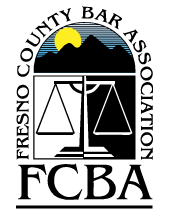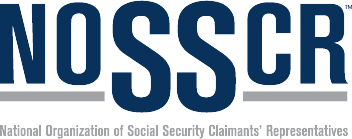The Role of Surveillance in Workers' Compensation Investigations
In the complex world of workers' compensation, ensuring that claims are both valid and fair is crucial for protecting the rights of employees and the financial stability of employers. Surveillance often plays a pivotal role in this process, serving as a tool to verify the authenticity of claims and detect potential fraud. In this blog, we'll explore the role of surveillance in workers' compensation investigations, delving into its purpose, methods, and the delicate balance between protecting interests and respecting individual rights.
Understanding Workers' Compensation Investigations
Workers' compensation is a critical component of the relationship between employers and employees, designed to provide financial support to workers who are injured or become ill due to their job. However, not every claim is straightforward, and the stakes are high for both parties involved. This is where the importance of workers' compensation investigations comes into play.
At its core, a workers' compensation investigation aims to ensure that claims are legitimate and accurate. While the majority of claims are filed by honest employees who genuinely need assistance, there are instances where discrepancies arise. These discrepancies can stem from a variety of reasons, such as misunderstandings about the extent of the injury, or, in some unfortunate cases, deliberate attempts to exploit the system. Employers and insurance companies, therefore, have a vested interest in verifying the details of a claim before compensation is granted.
The investigation process is not about casting doubt on every claim but about safeguarding the integrity of the workers' compensation system. When discrepancies or red flags appear—such as inconsistencies in the injury report, delays in reporting the injury, or conflicting medical information—investigators may be called in to delve deeper. Their role is to gather facts, observe the claimant’s activities, and cross-check information to ensure that the claim aligns with reality.
However, these investigations are more than just fact-finding missions; they represent a critical juncture in the workers' compensation process where the rights of the employee and the interests of the employer intersect. On one hand, it’s vital to protect the employee’s right to compensation for genuine injuries. On the other, it’s equally important to prevent fraudulent claims that can lead to higher costs for businesses, which can, in turn, affect the wider workforce.
Understanding the purpose and process of workers' compensation investigations provides insight into the delicate balance that must be maintained. These investigations are not merely about finding reasons to deny claims but are instead about ensuring that justice is served fairly and accurately in a system that supports both workers and employers.
The Purpose of Surveillance in Workers' Compensation
Surveillance in workers' compensation investigations serves as a crucial tool for ensuring that claims are both legitimate and accurately reflect the situation of the claimant. The purpose of surveillance is multifaceted, aiming to protect the integrity of the workers' compensation system while also safeguarding the interests of both employers and employees.
Claim Validity
One of the primary reasons surveillance is employed in these cases is to verify the validity of a claim. Workers' compensation is designed to support those who have suffered injuries or illnesses related to their job, but not all claims are as straightforward as they may seem. Surveillance allows investigators to observe the claimant’s daily activities and determine whether their reported injuries align with their actual behavior. For example, if an individual claims they are unable to walk due to a work-related injury but is seen engaging in physical activities that contradict this claim, it raises questions about the accuracy of the information provided.
Preventing Fraud
Beyond verification, surveillance also plays a key role in preventing fraud. Fraudulent claims, though not the norm, can occur and have significant financial implications for businesses and insurance providers. These fraudulent activities not only burden the workers' compensation system but also undermine the support available for genuinely injured workers. Surveillance helps identify such false claims, ensuring that compensation is reserved for those who truly need it.
Financial Interests
For employers and insurance companies, surveillance is a method of protecting their financial interests. Workers' compensation claims can be costly, and unwarranted payouts can lead to increased premiums and financial strain on businesses. By employing surveillance, companies can gather concrete evidence that either supports or challenges a claim, allowing them to make informed decisions about the compensation process.
However, the purpose of surveillance extends beyond merely catching fraudulent behavior. It is also about maintaining the balance of fairness within the workers' compensation system. Surveillance, when used responsibly and ethically, ensures that employees receive the benefits they are entitled to while preventing abuse of the system. It serves as a reminder that while the workers' compensation process is there to provide crucial support, it must also be safeguarded against exploitation to remain effective and fair for everyone involved.
Methods of Surveillance
Surveillance in workers' compensation investigations involves a range of methods designed to gather evidence and provide a clear picture of the claimant's activities and condition. These methods are selected based on the specifics of the case, the nature of the claimed injury, and the information needed to validate the claim. The effectiveness of these methods lies in their ability to uncover details that might otherwise remain hidden, ensuring that the truth is brought to light in a fair and accurate manner.
1. Direct Observation
One of the most common methods of surveillance is direct observation, often conducted by private investigators who discreetly monitor the claimant’s activities. This might involve following the individual to observe their daily routines, such as shopping, attending social events, or performing physical tasks. Through video and photographic evidence, investigators can document actions that may either support or contradict the claimant's reported limitations. For instance, if an individual claims they are unable to lift heavy objects due to a back injury, but surveillance captures them carrying groceries or engaging in strenuous activities, it could indicate that the claim needs further scrutiny.
2. Social Media
Another powerful tool in the surveillance arsenal is social media monitoring. In today’s digital age, many people share significant aspects of their lives online, often without considering who might be watching. Investigators may analyze public social media profiles, posts, and interactions to gather insights into the claimant’s lifestyle and activities. For example, a claimant who posts photos of themselves participating in physical activities, while simultaneously asserting a debilitating injury, can raise red flags. Social media evidence is increasingly used to cross-check the consistency of a claim, providing a less invasive but highly effective method of surveillance.
3. Modern Technology
In addition to traditional and digital methods, modern technology has expanded the capabilities of surveillance. Tools such as GPS tracking and drones can offer real-time monitoring and cover areas that are difficult to observe directly. GPS tracking might be used to follow a claimant’s movements in situations where long-term monitoring is necessary, providing a comprehensive overview of their daily activities over an extended period. Drones, on the other hand, offer a bird’s-eye view, enabling surveillance of large or secluded areas without the need for physical presence.
4. Within the Boundaries of the Law
These surveillance methods, while diverse, are united by their goal of providing an accurate and objective view of the claimant’s situation. However, it's important to note that these techniques must be used within the boundaries of the law, with respect to privacy rights and ethical considerations. The information gathered through surveillance can be pivotal in resolving workers' compensation claims, but it must be obtained and used responsibly to maintain the integrity of the process.
Each method of surveillance has its own strengths and is often used in combination with others to build a comprehensive case. Whether through direct observation, digital monitoring, or advanced technological tools, the aim is always the same: to ensure that the workers' compensation system remains fair, balanced, and just for all parties involved.
Ethical and Legal Considerations
The use of surveillance in workers' compensation investigations, while valuable, is fraught with ethical and legal considerations that must be carefully navigated. Surveillance, by its very nature, involves observing and sometimes recording individuals without their knowledge, raising important questions about privacy, consent, and the potential impact on the individuals being monitored. As such, it’s crucial that these investigations are conducted within a framework that respects both the rights of the claimant and the legal boundaries that govern such activities.
One of the most pressing ethical concerns is the right to privacy. Employees, like all individuals, have a fundamental right to privacy, which includes the expectation that their personal lives will not be unduly intruded upon. Surveillance can challenge this right, especially if it extends beyond reasonable boundaries or is conducted in a manner that feels invasive. For instance, while it may be acceptable to monitor a claimant's activities in public spaces, following them into private areas or using deceptive tactics to gain access to private information crosses a line. It’s essential that surveillance is conducted in a way that balances the need to verify claims with the individual’s right to privacy.
Legally, surveillance must adhere to a strict set of regulations that vary by jurisdiction. These laws govern what is permissible in terms of monitoring activities, recording conversations, and accessing personal information. For example, in many places, it is illegal to record someone without their consent, especially in situations where there is an expectation of privacy, such as inside a home or private office. Investigators must be thoroughly familiar with these laws to ensure that their methods do not inadvertently violate them, as doing so can render any evidence collected inadmissible in court and expose the investigating party to legal penalties.
Moreover, ethical surveillance practices require transparency and proportionality. Surveillance should only be initiated when there is a justified reason to suspect that a claim might be fraudulent or exaggerated. It should never be used as a fishing expedition or as a means to intimidate or harass a claimant. The methods employed should be proportionate to the nature of the suspicion, and investigators should avoid collecting more information than is necessary to resolve the case. Overreaching in surveillance can not only violate ethical standards but also damage the trust between employees and employers, leading to a toxic work environment.
The impact of surveillance on the employee-employer relationship is another critical consideration. When employees discover they have been under surveillance, it can lead to feelings of mistrust, anxiety, and resentment. This can harm the overall morale of the workplace and might lead to further disputes. Therefore, it’s important for employers and investigators to approach surveillance with sensitivity, ensuring that it is used as a last resort and only in cases where there is a clear need.
While surveillance is a powerful tool in workers' compensation investigations, it must be conducted within a strict ethical and legal framework. Respect for privacy, adherence to the law, and consideration of the broader implications on the workplace environment are all essential to maintaining the integrity of the investigative process. By balancing these considerations, investigators can ensure that their efforts are both effective and respectful, upholding the rights of all parties involved.
The Impact of Surveillance on Workers' Compensation Claims
Surveillance can have a significant impact on workers' compensation claims, influencing the outcomes in ways that affect both the claimant and the employer. When used appropriately, surveillance serves as a vital tool to uncover the truth in cases where there may be discrepancies or suspicions of fraud. However, the use of surveillance also carries implications for the fairness of the process, the integrity of the workers' compensation system, and the overall trust between employers and employees.
One of the most direct impacts of surveillance on workers' compensation claims is its ability to verify or disprove the legitimacy of a claim. When a claimant's activities are observed and recorded, surveillance can provide clear evidence that either supports the claimant’s account or reveals inconsistencies. For example, if a claimant reports a debilitating injury that prevents them from working, yet surveillance footage shows them engaging in activities that contradict this, the evidence can be pivotal in challenging the claim. This verification process helps ensure that only genuine claims are compensated, thereby protecting the financial resources of employers and insurance companies.
The deterrent effect of surveillance is another significant impact. The knowledge that surveillance could be employed in the investigation of workers' compensation claims may discourage individuals from filing fraudulent or exaggerated claims in the first place. This potential oversight encourages claimants to be honest and accurate in their reporting, knowing that any inconsistencies might be uncovered. As a result, surveillance contributes to the overall integrity of the workers' compensation system by reducing the likelihood of fraudulent claims being filed.
However, surveillance's impact is not solely positive. There are challenges and potential drawbacks associated with its use. One such challenge is the risk of surveillance yielding inconclusive or misleading evidence. Not all activities captured on surveillance accurately reflect a claimant’s physical condition or the extent of their injury. For instance, a person may be able to perform a particular activity on a good day but still suffer from chronic pain or limitations that are not immediately visible. Relying too heavily on surveillance evidence without considering the full medical context can lead to unjust outcomes, where legitimate claims are unfairly denied.
The cost of surveillance is another factor to consider. Conducting thorough and effective surveillance can be expensive, requiring skilled investigators, advanced technology, and sometimes extended periods of monitoring. These costs can add up, and if surveillance does not yield conclusive evidence, it may not always be a cost-effective solution. Employers and insurance companies must weigh the potential benefits against the financial outlay to determine whether surveillance is warranted in each case.
Moreover, the use of surveillance can have broader implications for the workplace environment. When employees are aware that they might be under surveillance, it can lead to a sense of mistrust and unease. This atmosphere of suspicion can harm workplace morale and strain relationships between employees and employers. While surveillance is sometimes necessary to protect against fraud, it must be used judiciously to avoid creating a culture of mistrust that can negatively impact employee engagement and productivity.
Looking to the future, the impact of surveillance on workers' compensation claims is likely to evolve as technology advances. New methods of monitoring, such as the use of drones or more sophisticated data analytics, may increase the effectiveness of surveillance but also raise new ethical and legal questions. As these technologies develop, the workers' compensation system will need to adapt, ensuring that the use of surveillance remains fair, transparent, and respectful of individuals' rights.
Surveillance plays a critical role in shaping the outcomes of workers' compensation claims, offering a means to verify claims and prevent fraud. However, its use must be carefully balanced against the risks of inconclusive evidence, high costs, and potential negative impacts on the workplace environment. By approaching surveillance with caution and respect for both legal and ethical boundaries, its benefits can be maximized while minimizing potential drawbacks.
Conclusion
In the realm of workers' compensation, surveillance serves as a crucial tool for ensuring the integrity of claims and protecting the interests of both employers and employees. While it can effectively uncover the truth and prevent fraud, it must be used responsibly, with careful consideration of privacy rights, legal boundaries, and the potential impact on workplace trust. As technology continues to evolve, maintaining a balanced and ethical approach to surveillance will be essential in preserving the fairness and effectiveness of the workers' compensation system.
Cole, Fisher, Cole, O’Keefe + Mahoney is Central California’s leading workers’ compensation and social security disability law firm. With over 30 years of successful experience, we are committed to securing maximum benefits for our clients in the Fresno, California area. Schedule a free consultation today.
© 2025 Cole, Fisher, Cole, O’Keefe + Mahoney
Making a false or fraudulent workers’ compensation claim is a felony subject to up to five years in prison, or a fine of up to $150,000 or double the value of the fraud, whichever is greater, or by both imprisonment and fine.







